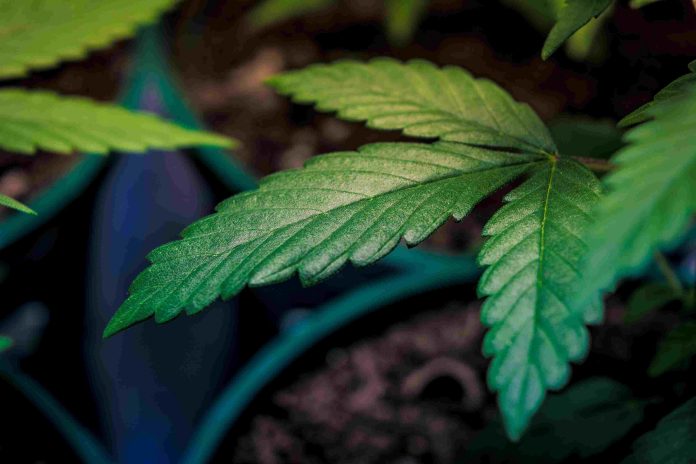According to the Santa Rosa-based beer, wine and spirits consulting firm bw 166, 2017 U.S. wine shipments were up 1.3 percent over 2016, and both domestic and foreign wine sales in the U.S. reached 403 million cases. According to Nielsen Data, wine consumers spent $41.4 billion on wine in 2017, nearly 3 percent over 2016 .
The data is good, but the future may not be a certainty for every U.S. wine producer. At 3.5 percent, the increase in wine imports in 2017 was triple the increase in overall wine shipments across the country. Couple that with continuing distributor consolidation and supermarket chain consolidation, each of which favors large domestic wine companies as well as competitively priced imports, and you can see why small and/or family-run domestic U.S. wineries might be concerned.
If the threat within the wine industry isn’t enough, some warn of an impending threat from a weed.
First, the good news: using Colorado as a test case, the wine industry market intelligence company, Gomberg Fredrickson & Associates (GFA) shows that marijuana legalization in that state isn’t having much of an effect on wine, beer, or spirits consumption. It took four years for Colorado to legalize medical marijuana (2000-2014). GFA tracked wine sales data beginning in 2005, when Colorado represented 1.83 percent of U.S. wine activity; in 2013, the state’s percentage had risen to 1.89; today, it is 1.99 percent of total wine movement. Allowing for changes in the adult population over the period 2005-2017, the data show a continuing increase in wine servings alongside the legalization of medical marijuana.
GFA does not view medical marijuana as a threat to wine sales. But what about legalized recreational marijuana?
According to the first issue of the Cannabis Intelligence Briefing (CIB), the $23 billion retail cannabis industry is on the move. Using data provided by Arcview Market Research and BDS Analytics, CIB claims “2017 has been a transitional year for the legal cannabis business as investors poured money into the industry in anticipation of some of the largest medical markets moving to adult-use [recerational use] programs by 2018. All signs point to how much of a game-changer that will be.”
Spending on legal cannabis in North America was $7.3 billion in 2016 and up 33 percent in 2017 to $9.7 billion. CIB expects adult recreational marijuana use will be at $7.7 billion in 2019 and $14.9 billion by 2021 : “It’s clear that legal cannabis will be a major contributor to the health of the U.S. economy in the next five years.”
At this pont, no entity has claimed defintively which segment of the adult consumer population recreational pot smokers represent. But California’s Department of Alcoholic Beverage Control (ABC) regulations may provide a clue.
California legalized adult recreational pot on January 1, 2018. Soon thereafter, ABC created an industry advisory stating there is nothing in present law prohibiting alcohol producers from holding a cannabis license, yet the agency can—and does—prohibit cannabis licensing within the same facility where an alcohol license exists. The agency also prohibits cannabis sales on the cannabis licensed premise, and it prohibits California wines from being infused with cannabis. Even though the agency refuses to allow them to do so, ABC appears to see the two markets joining.
What about the studies of late claiming that medical marijuana has been bringing wine consumption down?
Rob McMillan, of Silicon Valley Bank’s wine division remains unpersuaded that cannabis and wine do now or will in the near future compete for market share. He cites studies on decreased wine sales linked to medical marijuana sales and consider them flawed. He says he has done the math and the premise does not hold up:
“There are 949 million gallons of wine consumed by an estimated 240 million alcohol consumers. There are only 55 million pot consumers by estimates I found…let’s be generous and say 50 percent of the pot smokers are also regular premium wine consumers. A drop of 13 percent of annual total wine consumption is 123 million gallons right-sized to U.S. consumption. That means those pot consumers would have had to be consuming 4.5 gallons per capita (very high) before marijuana was legalized, and then would have to entirely stop drinking wine for there to be a 13 percent drop attributable to medical marijuana. There is also the reality that pot while not legal, has been widely available for some time.” He adds that the researchers ”are almost presuming there were no cannabis consumers before it became legal, and they put down their alcohol and took up their pipes when it became legal.”
McMillan believes, “While consumers smoke pot to get high, they don’t drink wine, or premium wine in particular, with the same end goal.” He also says, however, “To the extent wine is negatively impacted by weed, I think it’s going to occur largely in lower price segments. I can make some sense out of a consumer coming home to blow off steam and rather than drinking a six-pack of Coors Light, decides instead …”
As was the subject of a recent post here, if that consumer lives in Canada, it may be a cannabis beer instead, and what might that say about the future of beer consumption.
credit:420intel.com









